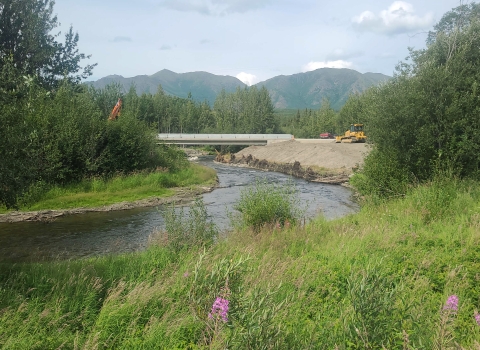PORTLAND, Ore. – The U.S. Fish and Wildlife Service has announced Eric MacMillan as the next Assistant Regional Director for the Fish and Aquatic Conservation program in the Pacific Region.
“The Pacific Region of the U.S. Fish and Wildlife Service spans Idaho, Washington, Oregon, and the Pacific Islands, and includes the Columbia and Snake Rivers. We work closely with Tribes, States, and a wide range of partners to manage culturally and economically important fish and aquatic resources,” said Hugh Morrison, regional director for the Service’s Pacific Region. “Eric MacMillan will bring a thoughtful, collaborative, and solution-oriented approach, an emphasis on partnerships, and a love of fish, fisheries and the northwest.”
For the past six years, MacMillan has worked for FAC headquarters in Falls Church, Virginia, first as the national aquatic habitat coordinator, and then as manager for the Branch of Aquatic Habitat Conservation. In this most recent role, he led a diverse portfolio for FAC, administering national programs focused on military lands and aquatic habitat conservation, including FAC’s implementation of Bipartisan Infrastructure Law Bipartisan Infrastructure Law
The Bipartisan Infrastructure Law (BIL) is a once-in-a-generation investment in the nation’s infrastructure and economic competitiveness. We were directly appropriated $455 million over five years in BIL funds for programs related to the President’s America the Beautiful initiative.
Learn more about Bipartisan Infrastructure Law funding through the National Fish Passage Program.
MacMillan grew up in Twin Falls, Idaho, earned an undergraduate degree in biology from Willamette University in Oregon, and then a master's degree in fisheries and wildlife at Michigan State University. MacMillan has been a technician with state agencies in Idaho, Oregon, and Wyoming, worked at a commercial rainbow trout hatchery, and had a short stint as a deckhand on a salmon fishing boat on the Oregon coast. Following graduate school, MacMillan worked for the National Oceanic and Atmospheric Administration Restoration Center focused on Great Lakes and Pacific salmon habitat restoration and supporting restoration planning efforts for the Deepwater Horizon oil spill. MacMillan then worked for the NOAA Fisheries Office of Protected Resources conducting Endangered Species Act section 7 consultations.
“I am beyond thrilled to come home to the Pacific Northwest to further the incredible work of the Fish and Aquatic Conservation program in the Pacific Region. After spending numerous years supporting the program at a national level, I am looking forward to being closer to the staff in the field, supporting the science, restoration, partnerships, and management happening on the ground,” said MacMillan.
In this role, MacMillan oversee the cooperative management of 12 National Fish Hatcheries, four Fish and Wildlife Conservation Offices, Abernathy Fish Technology Center, the Pacific Region Fish Health Center, and the Lower Snake River Compensation Plan program office. These programs provide millions of steelhead and Pacific salmon each year to support the Pacific Salmon Treaty and commercial, recreational, and Tribal harvest.
For more than 150 years, the Fish and Aquatic Conservation program of the U.S. Fish and Wildlife Service has been a partner on the American conservation landscape – delivering resilient habitats, healthy fish, connected people, and strong partnerships.
###
The mission of the U.S. Fish and Wildlife Service is working with others to conserve, protect, and enhance fish, wildlife, plants, and their habitats for the continuing benefit of the American people.For more information, visit https://www.fws.gov/about/region/pacific and connect with us on social media: Facebook, Instagram, Twitter/X, LinkedIn, Flickr, and YouTube.





